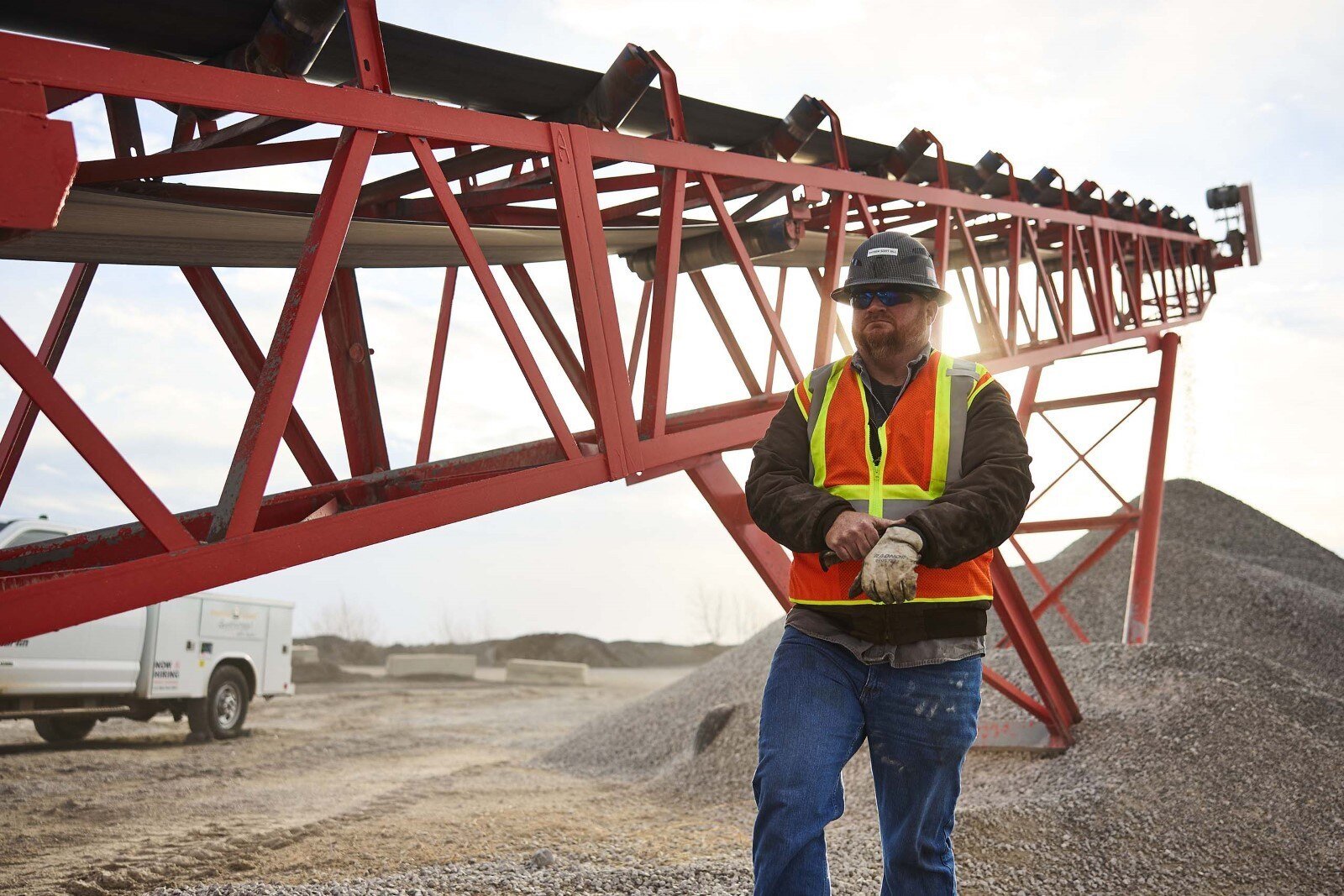By Seth Mercer on Nov 1, 2024 9:45:37 AM
As aggregate producers in the U.S. and Canada wrap up their production season, attention turns to preparing conveyor systems for a smooth startup come spring. Downtime provides an invaluable opportunity to assess, repair, and enhance the conveyor systems that play a central role in daily operations. Here’s a guide to the top priorities for off-season maintenance, ensuring both safety and productivity when things ramp up again.
1. Recognize the Power of Parts
Conveyor systems are more than just machines—they’re an interconnected system of crucial parts. To ensure a seamless spring startup, partner with reliable service providers and manufacturers. They can help inspect and, if necessary, replace parts like rollers, belts, and motors to ensure each component functions safely and reliably from day one.
2. Safety First: Inspect and Test All Safety Devices
Safety is paramount, especially during prolonged downtimes when issues can go unnoticed. Now’s the time to test emergency stop switches, verify startup alarms, and thoroughly inspect conveyor guarding. Addressing these items now reduces risk and ensures everything is up to code for a safer start in spring.
Read more: Best Practices For Conveyor Safety
3. Prioritize Wear Part Inspection
Wear parts like rubber skirting, used to seal against dust, and urethane primary cleaners, which remove carryback, experience a lot of wear and tear over time. Carefully inspect these components and replace any that are excessively worn. Keeping these parts in optimal condition not only enhances performance but also improves dust control, safeguarding both workers and the environment.
4. Address Dust Concerns with Skirtboard and Chute Sealing
Dust is a significant challenge for any bulk handling operation. Off-season downtime is an ideal window to ensure proper sealing of skirtboards and chutes, which prevents dust-laden air from escaping during operation. Sealing these joints also contributes to controlled airflow, reducing emissions, and enhancing worker safety.
Read more: A Hole In The Bucket: True Cost of Material Spillage From Conveyors
5. Check Structure Alignment to Prevent Belt Tracking Issues
Seasonal temperature fluctuations, especially ground freezing and thawing, can misalign structures and cause belt tracking issues. Before the next startup, verify that all structures are properly aligned, ensuring that the belt remains on track and operates efficiently. Preventive alignment checks can save significant time and expense that would otherwise be spent on repairs or adjustments.
Read more: Regularly Check Belt Conveyor Alignment
6. Invest in Team Training and Development
A wise mining leader once said, “If we’re not running, we’re training.” Investing in team development during the off-season can have profound effects on operational success. Use downtime to enhance skills, reinforce safety protocols, and review updates in OSHA or MSHA regulations, especially if there are equipment upgrades or system design changes on the horizon.
Explore training options: Belt Conveyor Maintenance & Operations Training
Maintain a Focus on Safety Throughout Downtime
During longer downtimes, it’s critical to ensure all conveyor systems are cleared of material, and Lockout/Tagout (LOTO) procedures are observed. Conduct a comprehensive review of all safety mechanisms, from stop switches to conveyor guarding, to detect any issues that could affect the integrity of the system or the safety of the team.
Read more: The Benefits Of Gaining Outside Perspectives From Trusted Experts
Conveyor systems are vital for successful aggregate production, and their reliability depends on effective maintenance during the off-season. Partnering with trusted service providers, rigorously inspecting wear parts, addressing dust control, and investing in team training all work together to ensure that conveyor systems operate at their best. Taking these steps now will save time, reduce risk, and improve productivity come spring.
Read next: The 9 Most Critical Points of Belt Conveyor Inspection








comments